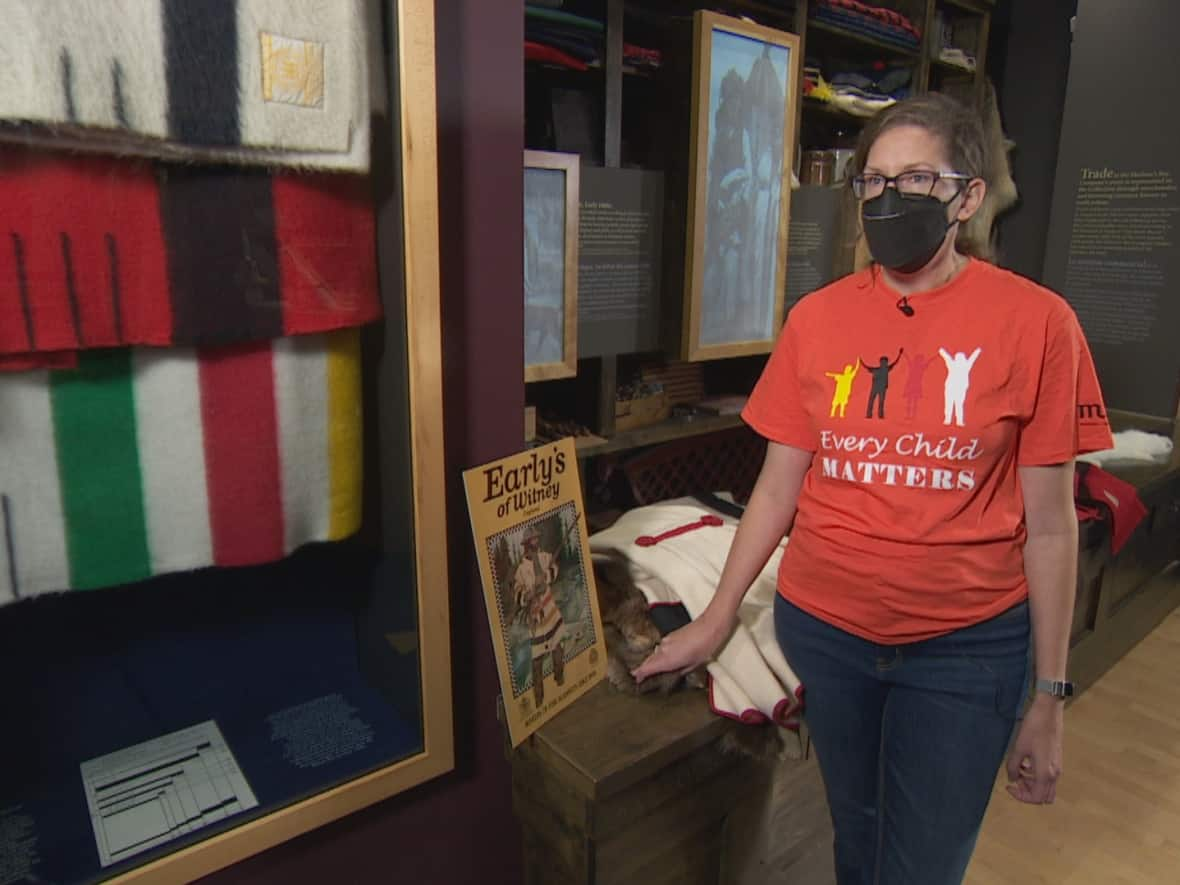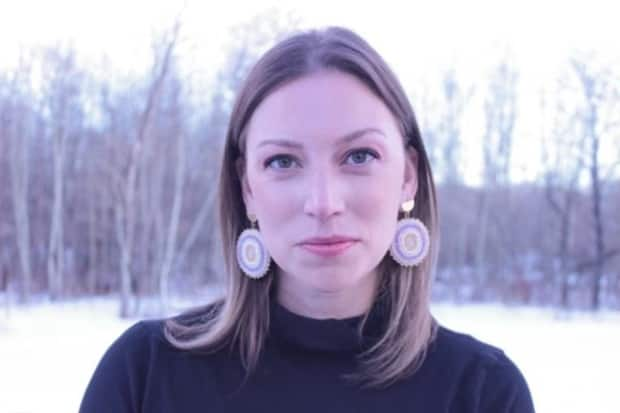Sales of iconic Hudson's Bay blankets will now support fund for Indigenous initiatives

An iconic but controversial symbol of Canadian history and colonialism may soon be seen as a gesture of reconciliation.
The Hudson's Bay Foundation and the Gord Downie & Chanie Wenjack Fund have announced that from now on, 100 per cent of the net proceeds from the sale of HBC's famed striped wool blankets will provide support for Indigenous cultural, artistic and educational activities through a newly launched initiative called Oshki Wupoowane — The Blanket Fund.
"We will never make profit from this blanket again. All the profits will go back to the Indigenous peoples," Iain Nairn, president and CEO of the Bay, told CBC News this week.
"We're going to get some things right and some things wrong. But I think if we have the right vision, ambition and the right community engagement, then we'll be successful here and continue creating a truth and reconciliation framework — not just for our company, but to lead corporate Canada in that journey."

The Hudson's Bay Foundation — the company's registered charity, which works to address racial inequity in Canada — is providing a $1-million contribution to kick off the official launch.
All funds will be administered by the Gord Downie & Chanie Wenjack Fund — a charity focused on reconciliation between Indigenous and non-Indigenous peoples. It's named for Chanie Wenjack, who died in 1966 at age 12 while trying to run away from a residential school, and Gord Downie, the late frontman of the band the Tragically Hip, who told Chanie's story in his multimedia project The Secret Path.
Applications will be accepted through two different grant streams: one for organizations focused on capacity-building and one for individuals using their grants to promote local initiatives in First Nations, Inuit and Métis communities.
Sarah Midanik, president and CEO of the Gord Downie & Chanie Wenjack Fund, says it's significant that HBC wants to make its point blankets (a reference to the point system, which indicates the size of the blanket) a symbol of reconciliation and moving forward together.
"Using such an iconic symbol of Canadian identity is really meaningful," she said.

Going forward, everyone purchasing a blanket "will also understand how it's being used to empower Indigenous communities, initiatives and organizations. That's really powerful," said Midanik.
Acknowledging the past is important, she said, "but ultimately we need to look towards the future and ensuring the strength and resilience and vibrancy of Indigenous peoples and communities for the next seven generations."
"We also need to start doing the work, and this is one way that we can move forward together."
A complicated symbol
The HBC point blanket has been many things in its history — a valuable trade item, an emblem of Canada rumoured as a carrier of disease, and a symbol of colonialism, says Amelia Fay, curator of the Hudson's Bay Company Museum collection at the Manitoba Museum.
"The point blankets and the stripes themselves ended up becoming a rather iconic symbol for the company," she said. Many Canadians associate the multicoloured stripes of the blankets "as synonymous with HBC and synonymous with … a very romanticized history of the fur trade," said Fay.
Many embrace it as a symbol of Canadian identity, she said, but "for other Canadians, it's not a positive symbol. So there is this sort of this clash."
While there is oral history that the blankets were used to purposefully spread smallpox to Indigenous people, Fay said the outbreaks were connected more to many people gathering in close contact — much like the current COVID-19 pandemic.
While Europeans often had immunity to the disease, Indigenous people did not, she said.
"They would bring blankets and other trade goods. They would be gathering in very small, poorly ventilated rooms and when they leave, suddenly, the community would fall sick with smallpox — many people would die.
"And so the perception was that it was linked to the blankets themselves. But in fact, it's not linked to the blankets."

Fay said she was happy to hear about the launch of Oshki Wupoowane, saying it shows HBC acknowledges its role in colonialism. It's an important gesture by a corporate leader, she said.
"There will be critics and I think there's still things you can criticize the company, and a lot of other institutions in Canada, for. There's still so much work to do.… We can't just wear orange shirts on the one day and leave it at that," she said.
But "steps towards recognizing the truth of what happened in the past and the truth of how that carries forward today … [are] still progress, and progress is good."
The Downie & Wenjack Fund will begin accepting applications for Oshki Wupoowane — The Blanket Fund early next year. The first round of grants are expected to be awarded in September 2023.


